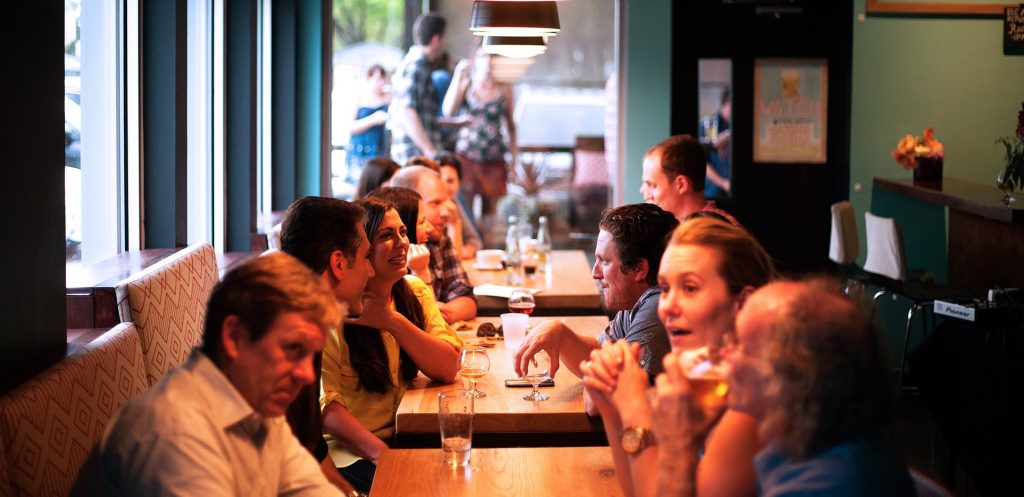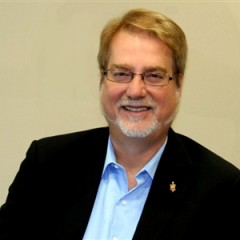One of the key insights in the Fresh Expressions movement is the emergence of the power of networks in the western world at the beginning of the 21st century. As the team writes in Mission Shaped Church (MSC), “networks have not replaced neighborhoods, but they change them”; and, at the same time, “community is increasingly being reformed around networks”.
Replacement 1: Networks
As I learned when I spent a Sunday morning outside of a church building, networks are increasingly displacing neighborhoods as our sole sources of community. This is the result of the flow of communication through technology and the increased personal mobility, especially among the young.
A network might center around a hobby—running, hiking, motorcycling and yoga are examples—or around work—information technology, teaching, health care—or around social justice—activism on behalf of immigrants, the LGBT community or victims of human trafficking. Members of networks may or may not live in proximity to each other. Their relationships will often be a combination of online communication, either through Twitter and Instagram (younger) or Facebook (midlife or older), and face to face meetings. Each kind of meeting reinforces the other, but the pervasiveness of technology allows for a deeper sense of identity that transcends geography or location.
Networks are displacing neighborhoods as our source of community. @BishopKenCarter
Tweet this.
Can Networks Form Community?
There is much work to do in the formation of community among networks. The challenge of longer term relationships of depth is real. The authors of MSC also comment on the significance of social capital that arises from deep bonds of faithful friendship and community. If we focus solely on neighborhoods, we will miss the reality of communal networks; but if we do not seek to preserve the strengths of neighborhoods (and neighborhood parishes), we will not offer an alternative to the individualization that pervades our culture.
This is at the heart of my own Wesleyan tradition, and in our particular understanding of how one grows in grace. As Andrew Thompson has noted, “social holiness names the environmental context into which Christians are progressively transformed by grace, which is a fundamentally social one”, with the contrast being a “solitary holiness” defined as mysticism apart from the concrete community in relation to the world.
Replacement 2: Third Place
This leads to a different contextual question for us: where is community discovered in our time? The sociological concept of third places is helpful in our exploration of neighborhoods and networks. The theory assumes that the two fundamental places, where we spend a great deal of our time, are home (or apartment) and work.
The next question becomes: where does one spend time when not sleeping or working? In Christendom (or church culture), a prominent third place was the local church. In the church (say, for example, in the traditional and disappearing Bible Belt of America) one might meet new friends, establish business relationships, play softball or basketball, make political connections, find potential dating relationships, and discovering a positive peer group for teenagers. Vestiges of church experiences along these lines do indeed remain, although it is becoming more rare to assume that one must accomplish any of these objectives in a local church. And, if we are honest, this was never the mission of the local church in the first place!
Where do people go when they're not sleeping? (hint: not church!)
Tweet this.
Instead, new third places are emerging in our culture: coffee shops, sporting leagues, digital media, entertainment and resort cultures, and pubs. Next generations especially orient their lives around these third places. Many of us know friends who inhabit coffee shops every day of the week, participate in running groups every weekend without exception, and form community in online relationships on a daily basis.
The primary theorist of the concept of “third places” is the sociologist Ray Oldenburg, author of The Great Good Place: Cafes, Coffee Shops, Bookstores, Bars, Hair Salons, and Other Hangouts at the Heart of a Community. Beyond the social environments of home and work (the first two places), third places are essential for civic engagement and the development of a more inclusive community. He outlines the following as fundamental characteristics of a third place: there are no economic barriers to entrance; there is food and drink; the space is highly accessible; there are regulars, who are usually present, and newcomers, who are welcomed and received with ease. It is also often the case that a third place has the quality of a neutral space, that the dominant mode of communication is conversation, and that the mood is playful.
Awkwardness and Opportunity
It is evident in noting the characteristics of third places that many local churches do not meet a number of these criteria: our congregations may be composed of middle or upper class people; the space may not be accessible; or the newcomer experience is often awkward. As churches become more bound to revered traditions (sacred cows), the space cannot be neutral; there is a clear distinction between founding families and recent arrivals. For these reasons, the church is called to plant expressions of Christianity in third places that are increasingly “homes away from home” for a mobile and networked society.
It turns out that there is an increasingly large mission field in which to do this creative work. As Jesus said to the disciples, “Open your eyes and notice that the fields are already ripe for the harvest.” (John 4. 35, CEB).
Consider:
Can you identify a significant network that is meaningful to you?
Can you identify two to three third places that overlap with the neighborhoods where you live and worship?
Originally published as “Where We Actually Live and Gather: Networks and ‘Third Places.'”


